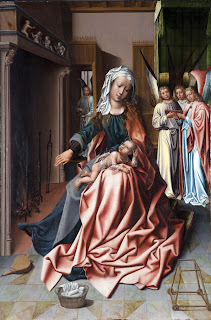Polly Knipp Hill in her college years
This April has been full of jam-packed Thursdays at GMOA, and this one is no exception. We have three things going on this p.m.
From 5 to 8 p.m., we encourage you to come over for Drawing in the Galleries. Bring your sketchbooks and colored pencils and really get to know the art in depth.
At 5:30 p.m., in the George-Ann and Boone Knox II Gallery, guest curator and artist Enee Abelman will speak on her exhibition "Polly Knipp Hill: Marking a Life Through Etching." Hill began working as an artist in the 1920s and garnered increased recognition in the decades that followed. Although she initially focused on European architecture, in her mature period her broad body of work grew to encompass poignant, amusing and slightly satirical genre scenes that reflected American culture. This retrospective exhibition of Hill’s life and career is organized iconographically according to the categories into which the artist herself divided her print oeuvre: Paris; America with "street and countryside scenes"; Florida; Arcadia (or reminiscences of her childhood); children’s games; and mountain culture. The groupings also reflect the chronology of her etching career. Abelman has many tales to tell of her dumpster diving and struggles to reconstruct Hill's autobiography and chronology.
Finally, at 7 p.m., we're screening "The September Issue" as our closing film in the series "Dress the Part: Fashion in Movies and Magazines," which goes along with the exhibition "Pattern and Palette in Print: Gentry Magazine and a New Generation of Trendsetters." With unprecedented access, the documentary tells the story of legendary Vogue editor-in-chief Anna Wintour and her larger-than-life team of editors creating the issue and ruling the world of fashion. Watch the trailer below:















